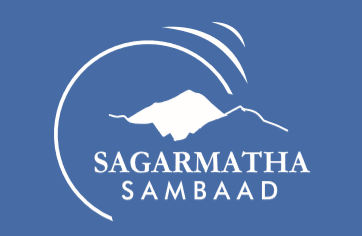Sagarmatha Sambaad
An editor has performed a search and found that sufficient sources exist to establish the subject's notability. (November 2019) |
| सगरमाथा संवाद | |
 | |
| Formation | 2019 |
|---|---|
| Purpose | To promote collective well-being through dialogue |
| Website | http://www.sagarmathasambaad.org |
Sagarmatha Sambaad (Template:Lang-ne) is a multi-stakeholder, permanent global dialogue forum initiated by the Government of Nepal. It is scheduled to be held biennially in Nepal.
The Sambaad (dialogue) is named after the world's tallest mountain Sagarmatha (Mount Everest) which is also a symbol of friendship and is meant to promote the notions of common good and collective well-being of humanity. Sagarmatha, being the highest natural landmark on the earth, is also the tallest witness of the unfolding global events.
The first episode of the Sambaad is scheduled to be held from 2 to 4 April 2020 [1][2] by the Ministry of Foreign Affairs (Nepal), in collaboration with the Institute of Foreign Affairs (IFA), Nepal and Policy Research Institute, a government policy think tank. The theme of the first Sambaad is "Climate Change, Mountains and the Future of Humanity."
Sambaad 2020


The first-ever Sambaad is to be held in Kathmandu, Nepal on 2–4 April 2020 on the topic of "Climate Change, Mountains, and the Future of Humanity" focusing mainly on the impacts of climate change that Nepal and number other countries around the world are facing. Deliberations on this theme is expected to contribute to identifying effective responses to combat climate change, by contributing to the sustainable development and complementing existing multilateral processes.
Discussions will also dwell upon the ‘organic link’ between mountains, oceans and many other ecosystems. Largely, the dialogue will be an opportunity to devise on the actions needed to realize the Sustainable Development Goals and commitment made under the Paris Agreement to limit the global temperature increase to 1.5 °C to avoid the worst impacts of climate change.[3]
References
This article needs additional or more specific categories. (November 2019) |
